Navigating the maze of reading comprehension for first grade learners
At the University of Quebec in Montreal, Canada, Dr Marie-France Côté studies the complexities of reading comprehension among first grade French-speaking learners in Quebec. She is looking at the difficulties in assessing these early years students and working on a new and more reliable assessment tool called ESPACE.
Talk like a… reading researcher
Anaphora — the use of a word referring to a word used earlier (or, sometimes, later) in a text to avoid repetition (e.g., the pronouns he, she, it and they)
Cognitive load — the amount of cognitive resource (such as working memory) required to perform a task
Explicit — when meaning is stated clearly
Grapheme — a written symbol of a phoneme (sound). This could be a single letter (such as ‘e’ in ‘egg’) or combination of letters (such as ‘ee’ in knee’)
Implicit — when meaning is implied, rather than stated directly, and has to be inferred
Inference — drawing conclusions or making educated guesses based on information provided in the text and one’s own background knowledge
Phoneme — smallest unit of sound in a given language
Reading comprehension — understanding the meaning of written text, including explicit and implicit information
The ability to read is not just about knowing words. It is about understanding stories and ideas; it expands our knowledge and guides us through the complexities of life. Among the many challenges faced in fostering literacy, understanding how young learners comprehend what they read is central. Many studies have already highlighted the crucial role of understanding written text and its profound influence on children’s academic progress. “Quebec-based research1 has shown that more than half of school dropouts experience significant delays or failures in reading at the time of dropping out,” says Dr Marie-France Côté, a special education teacher at the Université du Québec à Montréal. “It is also known that a significant proportion of students, ranging from 20% to 30% in primary school, encounter significant difficulties in text comprehension.”2
Marie-France and her team are studying reading comprehension among first grade French-speaking learners in Québec, developing a new assessment tool called ESPACE to detect and address these difficulties early on.
What challenges do beginner readers face?
For new readers, the journey of learning to read is like navigating a huge labyrinth of different words and meanings. It is a huge challenge – one that some say is the toughest cognitive task children face. When learning to read, children must make a concerted effort to recognise printed letters, to associate those letters with sounds and then to master making these connections quickly. “The process for reading a word involves learning the code, which means learning the sounds of each letter or each combination of letters,” explains Marie-France. “Children need to learn to map graphemes (letters) to phonemes (sounds) in order to be able to read written language.” In languages like French and English, where words do not always sound the way you would expect them to from how they are spelt, things can get even more complicated. Consider the word ‘knife’, which defies its spelling when pronounced, as the letter ‘k’ is silent. For this reason, children need to show flexibility when reading, adapting to the diverse ways words are pronounced, despite their written form.
Why is the assessment of reading at first grade so difficult?
“In first grade, 6-year-olds are still learning to map letters into sounds, and it takes many cognitive resources to do so,” says Marie-France. “Therefore, since our brain only has a certain amount of cognitive resources available at the same time (e.g., we cannot do five tasks at the same time), almost all the cognitive resource of young readers go to identifying words.” This allocation of energy leaves limited resources available for comprehending the text’s meaning once words are decoded. Consequently, crafting assessments for first grade readers requires careful consideration of the cognitive load imposed by word identification. For example, reading assessments should use a high proportion of easy-to-read, accessible words and a smaller proportion of harder-to- read words. Unlike older students who find word recognition easier, first grade students need simpler words to free up ‘brainpower’ for understanding the sentences and whole texts that they read.
According to Marie-France, it is also vital to assess both explicit and implicit information in reading comprehension assessments. While explicit information is directly stated in the text, implicit information requires readers to infer meaning, demonstrating higher-order cognitive skills. “Reading assessments need to assess a range of different abilities in students, in order to offer a rich overview of a student’s ability to read (e.g., understanding simple versus complex sentences or explicit versus implicit information),” explains Marie-France. “It is important to be able to identify which abilities students possess or which abilities they find more difficult, and to intervene and help where necessary.” For this reason, there is a great need for assessments that provide insights into various reading abilities, enabling teachers to personalise interventions to students’ needs.
What is the ESPACE assessment tool?
ESPACE, the Évaluation Spécialisée des Premiers Apprentissages en Compréhension Écrite (specialised assessment of first skills in reading comprehension), is an assessment tool designed by Marie-France and her colleague Professor Line Laplante to measure the reading comprehension skills of first grade students. It consists of six texts that progress in complexity, taking into account the challenges young readers face in decoding words. The words in each text are carefully selected to match the students’ ability to decode words, with simpler words in the earlier texts and more complex ones in the later texts. Additionally, the sentences in each text increase in complexity, and the associated questions target specific cognitive abilities, such as understanding anaphora and making inferences.
What insights has the ESPACE assessment provided?
Reference
https://doi.org/10.33424/FUTURUM489
© PeopleImages.com – Yuri A/Shutterstock.com
© Monkey Business Images/Shutterstock.com
© Monkey Business Images/Shutterstock.com
© metamorworks/Shutterstock.com
This innovative assessment tool has already been tested and improved upon. It was used to evaluate students’ comprehension of texts in February and June, two key assessment times in the school year, allowing researchers to track changes in understanding throughout the school year, especially from the middle to the end of the academic term. “Children’s ability to understand texts improved between the middle and end of the school year,” says Marie-France. “When looking at it in more detail, we observed that students did better in the June test on each question, even on those questions associated with higher level cognitive processes like inference. This shows that some (more able) students can answer inference questions as early as in the middle of Grade one.” However, performance varied across different text complexities, with students generally struggling more with complex texts.
One of the most interesting aspects of Marie-France’s research was the comparison of ‘typical’ and ‘at-risk’ readers. More specifically, students were categorised into three tiers based on their performance: low, average and high. Those in the low tier in February were considered ‘at-risk’. “If we compare the average score of typical and at-risk readers for each question type, we can see that typical readers always have a higher score than at-risk readers in both the February and June assessments, meaning that typical and at-risk readers’ comprehension differ greatly, no matter the type of questions,” says Marie-France. “Interestingly, some students were at-risk in February, but improved enough to not be considered at-risk in June.” This finding highlights the potential for growth and improvement among at-risk readers when provided with targeted interventions and support.
How could ESPACE be used in schools?
The ESPACE assessment holds great potential for enhancing literacy instruction in schools. By serving as a universal screening measure for first grade students, it enables early identification of those at risk of reading comprehension difficulties. “For example, a teacher noticing that the majority of students in her class struggle with certain questions requiring the implementation of a specific process could plan lessons aimed at the gradual development of this process during activities offered to all her students,” says Marie-France. This is what makes ESPACE so promising: teachers can tailor interventions based on students’ specific needs, fostering skill development and mastery. With its multiple uses and ability to track progress over time, ESPACE empowers educators to provide targeted support and ensure all students receive the necessary assistance to succeed in reading comprehension.
1 https://statistique.quebec.ca/fr/fichier/les-eleves-du-primaire-a-risque-de-decrocherau-secondaire-caracteristiques-a-12-ans-etpredicteurs-a-7-ans.pdf
2 Vaughn, S., Wanzek, J., Woodruff, A. L., & Linan-Thompson, S. (2007). Prevention and early identification of students with reading disabilities. In D. Haager, J. Klinger, & S.Vaughn (Eds.), Evidence-based reading practices for response to intervention (pp. 11-27). Baltimore: Paul H. Brookes Publishing Co.
 Dr Marie-France Côté
Dr Marie-France Côté
Department of Language Didactics, Université du Québec à Montréal, Canada
Fields of research: Language didactics, reading
Research project: Investigating the ability to understand written texts among beginning readers during the first year of primary school
Funder: This work is/was supported by the Social Sciences and Humanities Research Council of Canada (SSHRC), under award number 430-2021-00872. The contents are solely the responsibility of the à authors and do not necessarily represent the official views of SSHRC.
About language didactics
Language didactics is a field dedicated to the teaching and learning of languages, particularly within educational settings. It covers how people learn languages, develop reading and writing skills, and the best ways to teach languages effectively. Researchers in this field investigate how individuals acquire, process and use language skills, with a particular emphasis on effective instructional methods.
Language didactics is an important field that focuses on improving how children learn to read and write. “Knowing I can help improve children’s school journeys by developing assessments that can improve our understanding of their difficulties or conceive interventions that can help them better learn to read makes this career extremely rewarding,” says Marie-France. “It is also fulfilling to discover new information about how kids learn to read and share them with other researchers who share the same passion.”
For the next generation of language educators, there are many research opportunities waiting to be explored. “For example, conceiving and testing new interventions that could help children of all ages better learn to read and write, or investigating the best teaching practices for reading comprehension, vocabulary, grammar and spelling,” says Marie-France. Additionally, new issues are emerging in language education, such as the role of artificial intelligence (AI). “What role could generative AI play in education when it comes to learning to read and write? Could AI teach ‘better’ than an actual person? Could it assist a teacher by evaluating a student or grading papers?” says Marie-France.
Explore careers in language didactics
“You can read scientific articles and attend conferences about language didactics,” says Marie- France. “The Society for the Scientific Study of Reading (SSSR) is a big scientific association”. It offers resources, conferences and publications for researchers and practitioners in the field of reading and literacy.
“Any resources aimed at informing teachers about how they can better teach reading and writing is a good starting point,” says Marie-France. For example, The British Council provides free resources to teachers.
Some useful websites include the International Literacy Association (ILA) and TESOL International Association which provide professional development resources, publications and conferences focused on literacy education and research, and professional development opportunities for educators working with English language learners respectively.
Average salaries for language educators in elementary schools and universities in Canada range from $60,000 to $100,000.
Pathway from school to language didactics
To pursue a career in language didactics, it is beneficial to study subjects that provide a strong foundation in language, education and communication, such as English, social sciences and foreign languages.
“In university, a degree in education (elementary or high school) or in linguistics can lead to language didactics,” says Marie-France. “To be a research assistant, you will at least need a master’s degree. To become a professor and pursue your own research projects, you will need a PhD.”
“Some researchers have a background in educational psychology and specialise in the study of learning to read and write,” explains Marie-France.
Some language schools, educational institutions and language departments at universities offer internships for high school students interested in language didactics. Check with local universities, language institutes or language education organisations to inquire about internship opportunities.
Q&A
Meet Marie-France
Who or what inspired you to become a researcher in education and language didactics?
I first wanted to become a special education teacher to help kids that experience difficulty learning. After my bachelor’s degree, I didn’t feel ready to take on the responsibility of teaching a whole class of students with different educational needs, so I decided to complete a master’s degree in special education, with a specialisation in reading and writing.
During my academic journey, I fell in love with the process of doing research. I found other researchers and the possibility of improving teaching approaches very inspiring, and I love the creativity associated with the design of a research project. I also like doing a large range of tasks as a researcher (teaching future teachers, collecting research data among elementary school students, analysing data with diverse methods, participating in policy development, writing scientific articles, etc.).
What experiences have shaped your career?
Working with my research supervisors, both for my master’s degree and PhD, inspired me a lot. Then, giving my first speech in front of a crowd full of teachers and researchers and receiving great comments about my presentation was very empowering.
What are your proudest career achievements so far?
Developing the ESPACE assessment tool and seeing it being so appreciated by teachers in schools. Additionally, publishing scientific papers in journals and conferences I used to read/attend before becoming a professor. Collaborating in research projects with international researchers I used to admire when doing my doctoral studies has also been a particularly gratifying aspect of my journey in academia.
What are your aims for the future?
To develop more assessment and interventions that can help students experiencing difficulties better learn to read and write and share findings and the best teaching methods with teachers in elementary schools, so they can have the best tools to help students.
Marie-France’s top tips
1. Follow your passion and work hard.
2. Don’t hesitate to contact researchers and ask questions – we are always happy to answer questions and talk about our work.
Do you have a question for Marie-France?
Write it in the comments box below and Marie-France will get back to you. (Remember, researchers are very busy people, so you may have to wait a few days.)
Learn about how neuroscience is helping us to understand how we read:
www.futurumcareers.com/how-we-read-the-neuroscience-behind-literacy

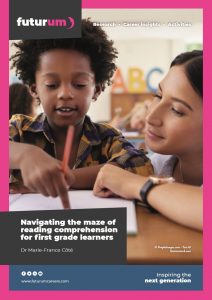
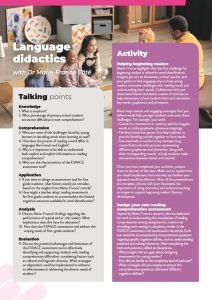






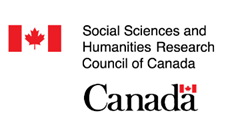
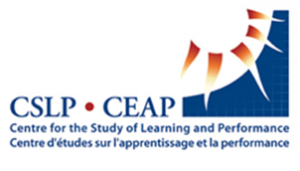
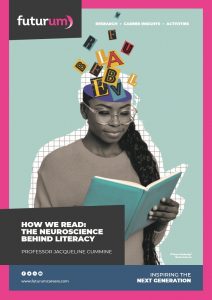
0 Comments